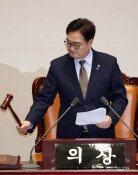US, France, Shanghai Show the Power of Multiculturalism
US, France, Shanghai Show the Power of Multiculturalism
Posted April. 08, 2009 06:10,
Indian Buddhist statues, Chinese paintings, Latin American musical instruments, Russian dolls and traditional Nepali customs are found in flea markets in New York.
A flea market in midtown Manhattan March 28 has stuff from all over the world along its 200-meter street. A 37-year-old Nepalese handed his Asian-American customer a Nepalese hat. Merchants and customers seemed to come from all over the globe. Similar flea markets in Manhattan are held every weekend.
○ The power of a multicultural society
The United States is a multiracial and multicultural nation. Minority groups including Hispanics and Asians account for 33.7 percent of the population. American kids are taught to understand different cultures from elementary school.
Thomas Jefferson Elementary School in Northvale, New Jersey, held March 27 International Day for first graders. Parents from 10 nations set up booths on their respective cultures and customs, and students visited the booths to learn more about their friends motherlands.
In the Korean booth, hanbok, or traditional Korean clothing, and traditional Korean etiquette were on display. Parents said the annual event helps students to understand diversity.
This is the power of America. A multiracial and multicultural society strengthens not only military and economic prowess but also soft power. According to the report The Expanded Influence of Minority Groups in the U.S. released by Samsung Economic Research Institute last year, minority groups have contributed to rapid economic growth and low inflation in the United States. Migrant workers have contributed to increasing population, lowering average annual income three percent, and expanding.
Especially in engineering and science, foreign workers have made a significant contribution to U.S. productivity. For example, foreigners account for 41 percent of doctorate holders in the engineering and science sector.
○ The French example
One of Frances most famous chansons was sung by Salvatore Adamo, an Italian immigrant. Though chansons represent unique French pop culture, a considerable number of chanson singers are immigrants.
In professional soccer, French teams have many non-white players. The 23-man French national squad for the 2006 World Cup had only six players whose ancestors lived in France. The remaining 17 were either children of immigrants or non-whites.
A number of cultures have integrated into French culture, which has embraced a variety of races. Culture critic Kim Hwi-rin said, France has been outstanding in embracing valuable people and cultures, regardless of race or nationality, and commercializing them.
For example, Pablo Picasso earned a reputation as a French artist but was born in Spain. Similarly, American novelist Ernest Hemingway has been promoted as a French intellectual. Bookstores and cafes where Hemingway mingled with other writers are must-visit places in Paris.
○ Shanghai
Shanghai has emerged as an international city mainly due to its status as an economic hub in East Asia. Lee Uk-yeon, professor of Chinese culture at Sogang University in Seoul, said Opening and mixed cultures are the driving force of Shanghai. Since Shanghai was a colony, it has become the hometown of different nationalities. Along with this historical factor, the open mind of the Chinese has resulted in a mixed culture.
Xintiandi is the most representative place showing Shanghais mixed culture. The structure of red-brick buildings reflects the citys traditional architectural style but indoor spaces boast contemporary factors. The buildings consist of traditional teahouses, craftwork shops, German-style beer halls and Starbucks coffee shops filled with Caucasians, blacks and Asians.
○ Competitiveness of an international city
Korea has more than a million foreign residents, equivalent to two percent of the population. But it is far from a globalized nation. According to the Globalization Index released by global management consulting company AT Kearney and the magazine Foreign Policy every year, Korea ranked 35th among 72 nations in 2007, falling a whopping seven notches from its 28th place in 2003.
Jang Myeong-hoon of AT Kearney Korea said, We placed 12 factors such as trade, foreign direct investment and tourism balance into four categories and evaluated them. In the past, Korea had an advantage in communications infrastructure. Other countries have caught up in the category but the amount of foreign direct investment in Korea has fallen. As a result, Koreas globalization record has gotten lower.
Against this background, the conditions of international cities hold many implications for Korea. Shanghai ranked 20th among 60 nations on AT Kearneys 2008 Global City Index, but placed eighth in business activity.
Certain experts say the materialism of Shanghai residents has resulted in an open cultural space, which, in turn, has attracted foreign capital.
Former political activist Hong Se-hwa, who wrote I Am a Cab Driver in Paris and raised tolerance as a social issue, said Korea needs to prepare itself to become a multicultural society.
The children and grandchildren of immigrants became violent protesters even in France, which bans discrimination, he said. In Korea, the children of multicultural families face much discrimination. When they grow up, Korean society will face more serious issues.
fineday@donga.com higgledy@donga.com







